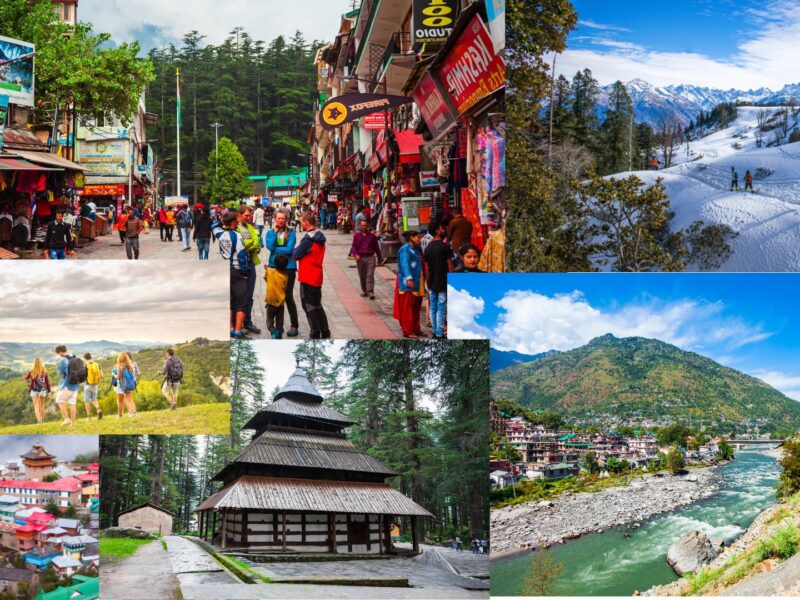The tallest mountain in the lower Himalayas of the Garhwal region close to Mussoorie is Nag Tibba, which is interpreted as Serpents Peak. It additionally gives its name to the Nag Tibba Range, one of the three Lesser Himalayan mountains (the other two being Dhauladhar and Pir Panjal). It has for quite some time been believed to be the home of the Snake God, or ‘Nag Devta.’
Nearby residents make the excursion to the mountain routinely to implore the Snake God to save their creatures from venomous snakes. In light of its dynamite appeal and high rise, this area has drawn explorers and experienced searchers. Trekkers might appreciate stunning perspectives on various tops from Nag Tibba trek, including the Bandarpunch mountain, the Gangotri gathering of highest points, Kedarnath top in the north, Doon Valley, and the snow pinnacles of Chanabang.
It is one of the best Saturday treks that can be embraced by both beginner and experienced explorers. An unassuming sanctuary is arranged on top of a slope, from where wonderful perspectives in general Bandarpunch piles of the Great Indian Himalayas towards the Yamunotri side should be visible.
History of Nag Tibba Trek
Nag Tibba is known to be the home of Nag devta or the God of Snakes. Nag implies snake. ‘Tibba’ is a neighborhood word that implies top. Neighborhood townspeople frequently come here to love and offer blossoms and get gifts from Nag Devta. In Hindu folklore, snakes are considered as the portrayal of resurrection, passing, and mortality, because of their projecting of the skin and being emblematically “reawakened”.
Since the days when religion and love were a reaction to a lifestyle rather than a justification for presence; snakes have been given a clique status. There are many snake god legends and images related with them, like Sheshnag (Vishnu’s resting loveseat), Anantnag (the interminable snake), Kaliya (Krishna’s dance), Vasuki (sea beating), Padmanabha (watchman snake, especially in southern India), Manasa Devi (snake goddess, etc.
Best Time to visit Nag Tibba Trek
The Nag Tibba Trek is best done in the late spring months, from April to June, and in the cold weather months, from October to December. The best time to visit Nag Tibba for the people who need to encounter snowfall or snow trekking in Chopta are January to March.
Summers at Nag Tibba are exquisite. The Himalayas are found somewhere far off. A new wind is ceaselessly blowing to keep you agreeable. During the storm, the wonderful foliage of Nag Tibba is tempting. Nothing beats partaking in a cuppa while gazing at the snow-covered pinnacles of Nag Tibba while downpours dance surrounding you. There might be avalanches that make streets be shut down for quite a long time, yet the beautiful magnificence of Nag Tibba merits the work.
Throughout the colder time of year, you will not be disillusioned with the Nag Tibba stroll in the colder time of year assuming you’re looking for harmony. There will be snowfall all through the colder time of year, yet you might in any case partake in the fantastic perspective on Nag Tibba that is unmatched. This is the means by which heaven on Earth will resemble.
Area of Nag Tibba Trek
Nag Tibba is situated in the lower regions of the Garhwal Himalayas, upper east of Mussoorie. The highest point is 3022 meters above ocean level. It gives amazing perspectives on Mussoorie, Vikasnagar, the Bandarpoonch mountain, and the prods framed by the Yamuna waterway valley. Nag Tibba is a trademark edge top in the lower Himalayas’ Nag Tibba Range.
Instructions to arrive at Nag Tibba Trek
The Nag Tibba Trek’s headquarters is at Pantwari Village, Tehri Garhwal District.
Pantwari is 90 kilometers from Dehradun and 140 kilometers from Rishikesh. A common jeep might take you from Dehradun to Pantwari at a sensible cost. On the other hand, you might take a private taxi from Dehradun for generally INR 2200.
Dehradun is effectively available via vehicle, train, and plane. This is the way to arrive:
Via Air:-
The nearest air terminal to Pantwari is Jolly Grant Airport in Dehradun, which is 155 kilometers away. Departures from New Delhi to Dehradun are accessible.
Via Train:-
The closest rail line station to Pantwari is at Dehradun, which is 73 kilometers far off. A few trains travel between Delhi and Dehradun, including the Dehradun Express, Mussoorie Express, and Nanda Devi Express. It is ideal to purchase your train tickets well ahead of time.
By Road:-
Pantwari has no immediate transport administration. Short-term HRTC transports and Volvos are accessible from ISBT Kashmere Gate in Delhi to Dehradun. The distance between Delhi and Dehradun is roughly 247 kilometers. From Delhi to Dehradun, you may either take a taxi or an outstation taxi.
Read More – How To Style Smart Trousers


